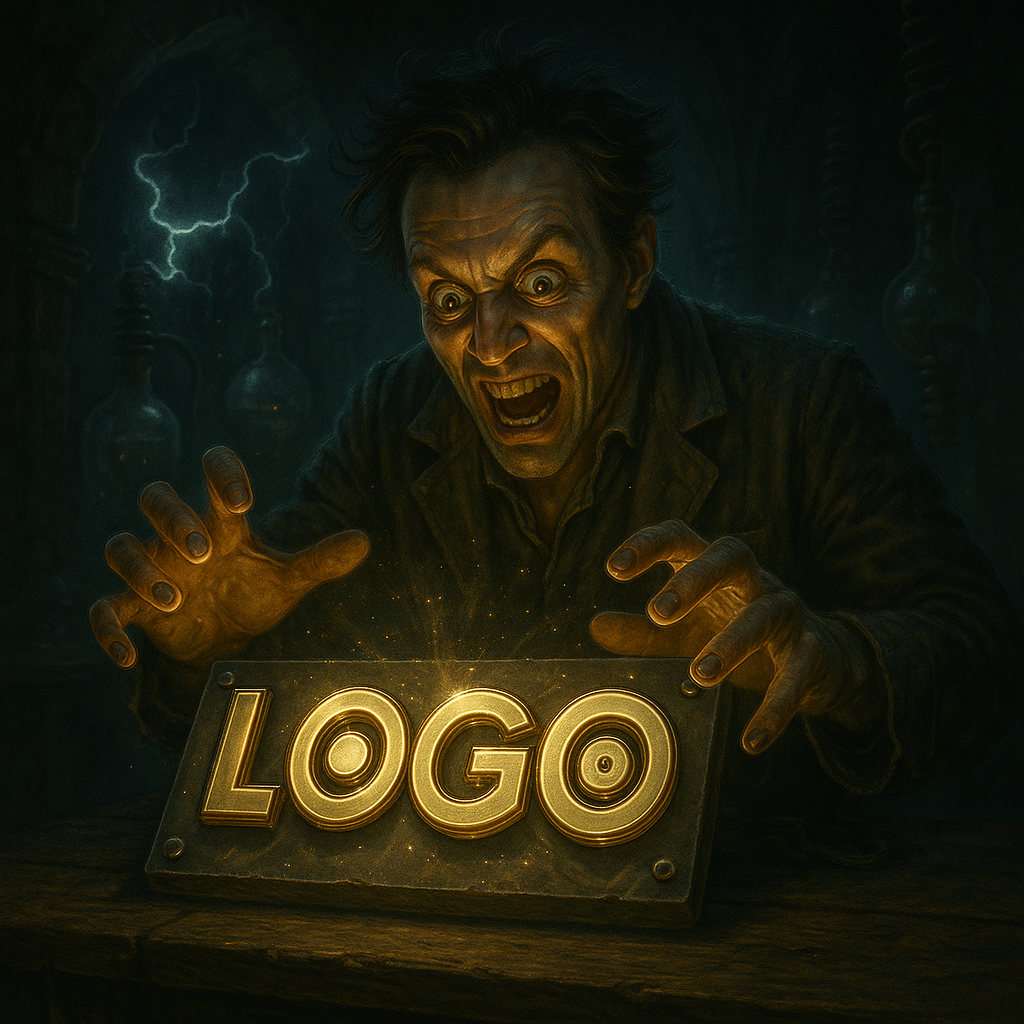The Illusion of “Wow”: Why Flashy Logos Fail in the Real World

When it comes to logo design, everyone wants to be blown away. We all love the eye candy—the 3D shine, glowing bevels, shadows, gradients, reflections, and cinematic flair. When they first see it, clients often say, “Yes! That’s the one!” But here’s the problem: what people think they want in a logo almost always collapses under the weight of real-world application. What dazzles on a screen often dies in execution.
Let’s break it down.
A Logo Isn’t a Movie Poster
A logo is a workhorse. It needs to live across every format imaginable: from embroidered polos and vinyl truck graphics to tiny web favicons and black-and-white invoices. The flashy, stylized logo we just showed you? It looks incredible… on a screen. Try printing it on cardboard, cutting it from vinyl, or reducing it to ½ inch wide. It falls apart fast.
Logos aren’t meant to be illustrations. They’re symbols. At their best, they are instantly recognizable no matter the context—clear, simple, and adaptable.
Fancy Effects Don’t Scale
Bevels, drop shadows, gradients, lens flares—they don’t scale cleanly. That dramatic lighting you loved on your 1080p monitor? It turns into visual noise on a business card. Worse, it muddies the shape and message of the brand. Target’s actual logo is iconic not because it’s flashy, but because it’s fundamentally sound. Bold, minimal, clean. It works in one color, reversed, embossed, etched, or burned onto a wooden crate. It doesn’t rely on trend-driven effects to be recognizable.
Trendy Today, Outdated Tomorrow
Design trends come and go. Glossy gradients, 3D chrome, and digital shadows might look modern right now, but they’ll age just like everything else. A great logo isn’t chasing “today’s style”—it’s built to endure. Coca-Cola, Nike, Target, FedEx—these brands haven’t needed to reinvent their logos every three years. Simplicity wins the long game.
It’s About Function, Not Just Feeling
The temptation to “wow” someone with visual drama is real. And yes, that emotional reaction has value—but not at the cost of usability. A good logo isn’t trying to be a painting. It’s trying to be a stamp, a signature, a symbol of consistency.
If you need to feel motion, texture, or drama—those things belong in your campaign visuals, your product photography, your social content. Not your logo.
Your Logo Isn’t Your Brand
Let’s say it clearly: your logo is not your brand. It’s the tip of the spear—a shorthand for your reputation, your experience, your story. Making it flashy doesn’t make it more effective. It’s like adding sequins to your signature. Looks fun, but what does it actually do?
Your brand should be felt through your tone of voice, your visuals, your messaging, your customer experience. The logo just needs to carry the flag—not light the fireworks.
Yes, we can design the “remastered, over-the-top” version. And sometimes, it helps clients get it out of their system—to see what “too far” looks like. But in the end, restraint wins. Smart brands know that clarity, confidence, and simplicity aren’t boring—they’re powerful.
You don’t need to shout to be seen. You need to be clear to be remembered.
Want to explore the right logo for your brand? Let’s design something that works everywhere—forever.